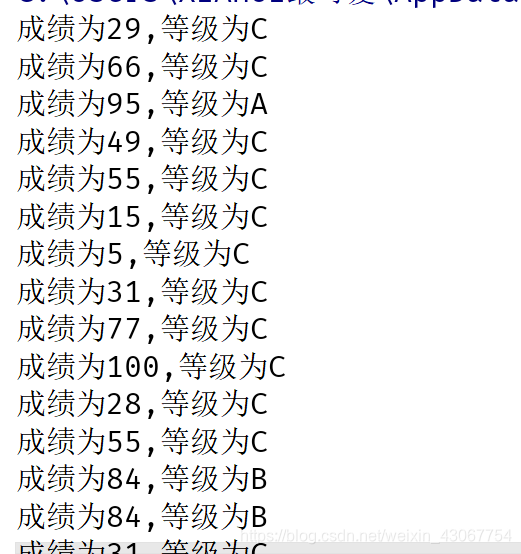1.函数调用时一般有返回值,没有定义返回值的时候,python中默认返回None
def hello():
print('hello')
res = hello()
print(res)
输出:
hello
None
2.return
def hello():
# return 返回的表达式或者变量
return 'hello'
res = hello()
print(res)
输出:
hello
3.return的应用
要求:
1.随机生成20个学生的成绩
2.判断这个20个学生的等级
import random
def get_level(score):
if 90 < score <= 100:
return 'A'
elif 80 < score <= 90:
return 'B'
else:
return 'C'
def main():
for i in range(20):
score = random.randint(1,100)
print('成绩为%s,等级为%s' %(score,get_level(score)))
#注意这里函数调用的方法

4.多个返回值
def fun(a):
# 接收一个列表,求这个列表的最大值,平均值,最小值
max_num = max(a)
min_num = min(a)
avg_num = sum(a) / len(a)
# python函数中,只能返回一个值
# 如果非要返回多个值,会把返回的值封装为一个元组数据类型
return max_num, min_num, avg_num
variables = fun([34, 1, 2, 3, 4, 5, 6, 7, 421]) #函数可以直接参数输入一个列表
print(variables, type(variables))
输出:
(421, 1, 53.666666666666664) <class 'tuple'>
#多个返回值结果封装成元组